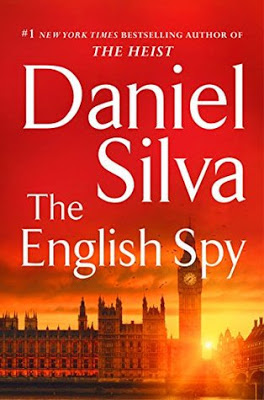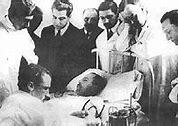

Sue and Tom Klebold's son - Dylan Klebold - was one of the Columbine High School shooters. On April 20, 1999 Dylan and his friend Eric Harris brought explosives and guns to school, apparently planning to cause mass carnage by blowing up the building. The bombs failed to go off but the boys did roam the school spraying bullets; they killed 12 students and a teacher, wounded 24 others, and then committed suicide.

Dylan Klebold

Eric Harris

Dylan Klebold and Eric Harris roaming the halls of Columbine High School with firearms
Sue Klebold starts this memoir by taking us through that day from her point of view. Alerted by a phone call that there were shootings at Columbine High School Sue was stunned and frightened - and like most parents - worried about her child. Was he shot? Was he injured? Was he dead? Then, learning that her son was actually one of the shooters, Sue's world fell apart. Disbelief! Shock! Horror! How could Dylan do such a thing! This couldn't be true! It must be a mistake!.

Grief at Columbine High School
But it wasn't a mistake and the police descended on the Klebold home to search for bombs and guns (the police found nothing). Meanwhile, Sue, Tom, and their oldest son Byron numbly wandered around their driveway, unable to take it in. An aggressive press and a furious public made it necessary for the Klebolds to take refuge in the home of relatives with a different last name. There they succumbed to confusion, grief, guilt, depression....the gamut of emotions anyone would feel at such a time.

Sue Klebold

Tom Klebold

Byron Klebold
Though Sue and Tom had to accept that Dylan was a Columbine shooter they remained in denial, convincing themselves that Dylan had been coerced or hoodwinked into participating; or perhaps his mind had suddenly snapped. Then, four months after the massacre the police showed Sue and Tom videos made by the boys. The films clearly showed that Dylan and Eric had carefully planned the attack and that Dylan was an active and willing participant. After this devastating blow Sue could barely go on.


Dylan Klebold made videotapes
For legal reasons (the Klebolds were being sued by the victims' families) Sue couldn't even join a support group or confide in friends and family - out of concern that anyone she spoke to might be called to testify. Thus Sue's life became even more difficult and circumscribed. She returned to her job as a college counselor for disabled students, but could barely concentrate on her work. Sue became depressed and anxious, lost a lot of weight, developed breast cancer, and started having panic attacks. Sue also grieved deeply - both for her beloved son and his victims - and at one point wanted to die herself.

Sue Klebold
After the massacre, realizing she had not known how depressed and suicidal (and perhaps mentally ill) Dylan was, Sue made it her business to educate herself. She read widely, did research, and interviewed experts about mental illness, mass shootings, murder/suicides, school bullying, gun availability, and so on....to try to make sense out of Dylan's actions.

Sue Klebold
Four years after the shootings the Klebolds were deposed by attorneys and the lawsuits were settled. Now free to talk about the incident Sue eventually decided to write this memoir. She wanted people to understand that Dylan had grown up a happy child in a loving home; that he had seemed like a perfectly normal teenager - close to his family but a bit difficult and uncooperative (which in hindsight were warning signs); and that she had absolutely no clue that he was capable of such violent destructive behavior. Sue also wanted to make people aware that their own children might be troubled and suffering without showing obvious external clues. Sue's overall aim: to help prevent such tragedies in the future.

Sue Klebold and Dylan

Sue Klebold and Dylan

Dylan Klebold seemed like a happy child
I think many people who read this book will empathize with Sue Klebold. Anyone who's raised a teenager knows that adolescents can be rebellious and hard to live with, but they almost never commit horrible atrocities. I guess the lesson is to make every effort to REALLY know your children - and get them help if they need it.
I don't agree with people who deride this book as a self-serving apologia and an attempt to wriggle away from blame. With the very best of intentions parents can make mistakes - but even so, they're not necessarily responsible for what their kids do. I also applaud the fact that the book's profits are being donated for mental health research.
I think this is a good honest book, worth reading.
Rating: 3.5 stars

























